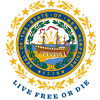Governor-Designated and Secretary-Certified Rural Health Clinic Shortage Area Status
Information regarding the Governor-Designated and Secretary-Certified shortage area designations for the purpose of certifying Rural Health Clinic sites
In addition to the Medically Underserved Area (MUA) and Health Professional Shortage Area (HPSA) designations that our state actively pursues and updates, federal statute provides an option for the Governor of a state to establish a policy regarding the submission of Governor-Designated and Secretary-Certified (GDSC) shortage area designations for the purpose of certifying Rural Health Clinic (RHC) sites.
Process
It is not the intent of the NH DHHS that the GDSC process be used as a primary means of certifying an area for RHC eligibility, nor will GDSC eligibility be assessed statewide. The request to evaluate the use of the GDSC option must be initiated by one or more health care providers operating primary care facilities in a defined geographic area of the state. The provider organization(s) should contact the Rural Health and Primary Care Section of the Department of Health and Human Services to make this request. The following conditions must be met:
- The interested organization has expressed specific current, or near-term, interest in participating in the federal Rural Health Clinic program.
- At least one of the service delivery facilities operated by the organization is located in a non-Urbanized Area, as defined by the US Census, and meets the other requirements for RHC participation, except for the shortage designation requirement.
- The Rural Health and Primary Care Section has already determined that the area in which the requesting service is located is not, and cannot be, designated via the standard Medically Underserved Area (MUA) or Health Professional Shortage Area (HPSA) designation processes.
Evaluation
The Rural Health and Primary Care Section will evaluate the applicability of using the GDSC in the specific situation. Any required provider surveys will be conducted by the state office, however the applicant organization may also be asked to provide relevant data and to verify the list of local providers. The provider FTE for the survey will be calculated in accordance with established HPSA guidelines. The population size and demographic information for the area will be assessed using the data provided by the federal Division of Shortage Designation, as available; however, alternate population statistics may be used if deemed more accurate or current.
Eligibility Criteria
In order to be considered, an area must meet the following criteria:
- Rational Service Area (RSA) – It must be possible to establish a rational service area, as defined by the federal regulations governing the MUP and HPSA service area definition, which covers the providers and communities in question. The RSA may be defined using any of the Census defined geographic units applicable for an MUP or HPSA. The population center used to evaluate the extent of an RSA for a GDSC request will be the same as that used for a HPSA, with the exception that the population center will be evaluated as the community where the requesting organization is located, rather than the community with the highest total population. In cases involving multiple organizations/sites, the community with the highest population density (resident population / square mile land area) containing an applicant site will be used as the population center. The standard HPSA miles/minutes thresholds will be used to determine which providers are excessively distant from the established population center. Note that the resources of communities larger than the population center will not be excluded as accessible to the service area if they fall within the miles/minutes threshold, but such communities will not be the required population center for evaluation.
- Proven Provider Shortage – The area must demonstrate a lack of medical access for the population (or population sub-group) residing in the service area. Provider shortage will be demonstrated if one of the following conditions is shown:
- A demonstrated physician:population ratio exceeding the 2500:1 ratio.
- A demonstrated physician:population ratio between 2000:1 and 2,500:1, and where additional factors can be shown to be contributing to, or indicative of, limited primary care access. In addition to the High Need indicators in the current HPSA, the state also proposes the indicators listed below, based on our ongoing Primary Care Assessment. A service area that itself demonstrates, or is in a state Public Health Region demonstrating, a 3-year rate statistically higher (at 95% confidence) than the state rate for any of the following characteristics would qualify for this lower ratio:
- Age Adjusted Death Rate or % Premature Deaths
- % Late/No Prenatal Care
- % Low Birthweight
- Age Adjusted ER Discharge Rate
- % No Usual Source of Care / Personal Health Care Provider
- % Delayed or avoided care due to cost
- % Fair or Poor health status
- % Uninsured
- % of Providers planning to reduce or leave practice within 5 years
- Minimum Population Threshold – To be considered for a population specific designation, the target population for the designation must represent at least 20% of the total resident population and represent at least 2000 individuals, or represent at least 5000 total individuals.
Submission/Renewal
The NH Department of Health and Human Services shall prepare and submit an application for GDSC designation to the federal Division of Shortage Designation for any requesting community meeting the eligibility criteria set forth above. Such designations will be renewed on a 4-year cycle from the date of approval, as necessary to continue their effective use in obtaining and maintaining RHC status for providers in the area. Renewal will be based on the same criteria established above, or any updated criteria subsequently submitted and approved by the Governor.



